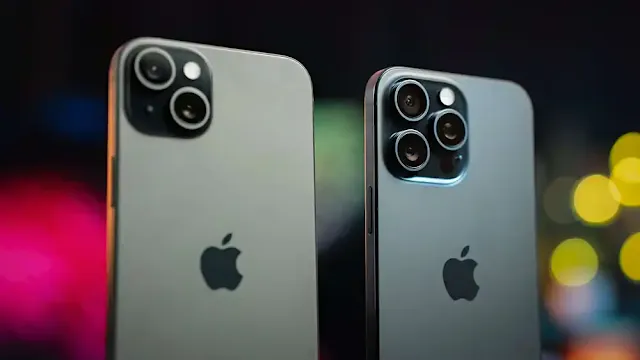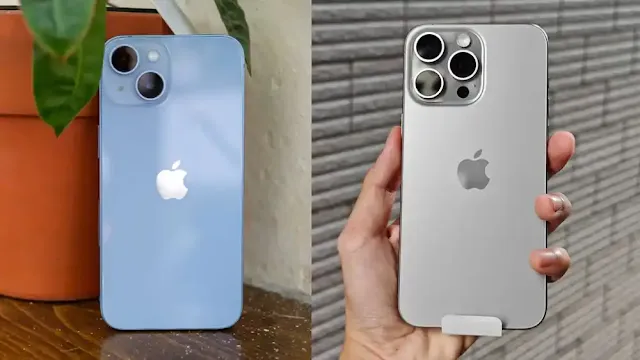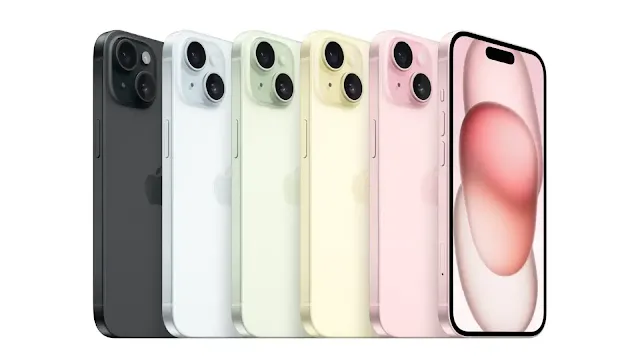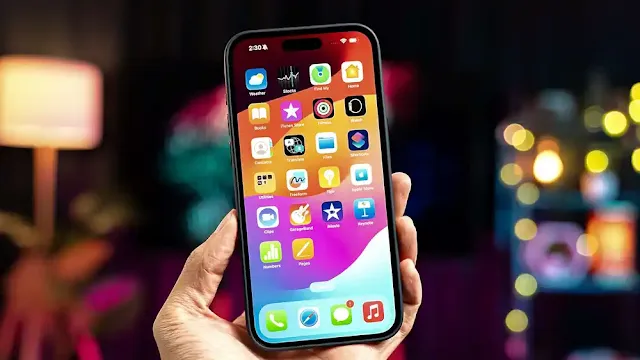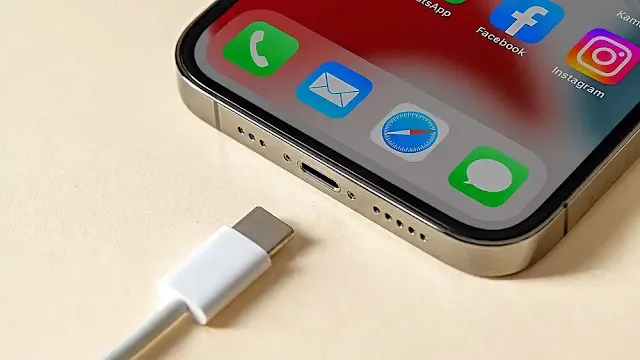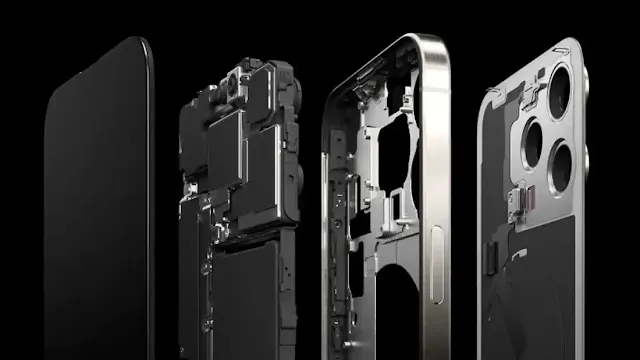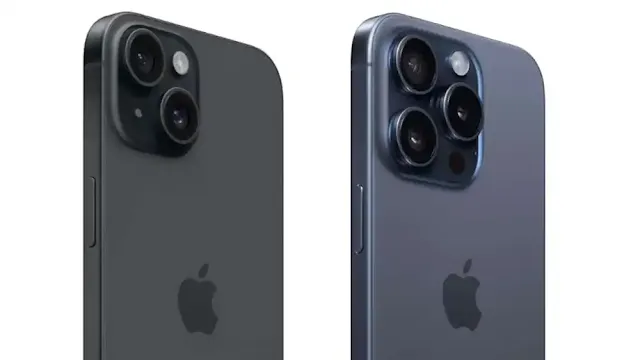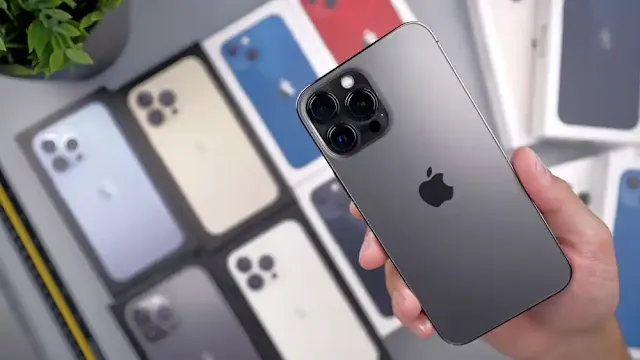Apple iPhone 15 vs. iPhone 15 Pro: Which iPhone is Right for You?
Apple
continues to set the benchmark with its flagship
iPhone
models. The choice between the regular
iPhone 15
and the
iPhone 15 Pro
is a decision many consumers face when considering their next
upgrade.
Each year, Apple introduces new features and enhancements, creating
differentiation between these two variants.
In this in-depth comparison, we will meticulously examine the similarities
and differences between the iPhone 15 and iPhone 15 Pro, enabling you to
make an informed decision that aligns with your preferences and
priorities.
iPhone 15 vs. iPhone 15 Pro Comparison:
| Specs | iPhone 15 | iPhone 15 Pro |
|---|---|---|
| Display Size | 6.1 inches | 6.1 inches |
| Display Type | Super Retina XDR OLED | Super Retina XDR OLED |
| Display Resolution | 1179 x 2556 pixels | 1179 x 2556 pixels |
| Refresh Rate | 60Hz | Up to 120Hz (ProMotion) |
| Chipset | A16 Bionic | A17 Pro |
| RAM | 6GB | 8GB |
| Battery Capacity | 3349 mAh | 3274 mAh |
| Main Camera | 48MP | 48MP |
| Ultrawide Camera | 12MP | 12MP (autofocus) |
| Telephoto Camera | N/A | Yes |
| ProRes Video Capture | No | Yes |
| High Refresh Rate | No | Yes (ProMotion) |
| Ray Tracing | No | Yes (Hardware-Accelerated) |
| Face ID | Yes | Yes |
| Water Resistance | IP68 | IP68 |
| Price | Starting at Rs. 79,900 | Starting at Rs. 1,34,900 |
| Available on | Amazon | Amazon |
Size and Design:
The physical dimensions of the iPhone 15 and iPhone 15 Pro are remarkably similar, with subtle variations.
The iPhone 15 is slightly taller and wider, while the iPhone 15 Pro
compensates with a thicker profile. The in-hand feel is nearly identical,
making them both comfortable to hold.
Notably, the iPhone 15 Pro is slightly heavier at 187 grams, compared to
the vanilla iPhone 15's 171 grams.
This year, Apple has adopted a titanium frame for the Pro models, reducing
weight compared to previous stainless steel frames.
The iPhone 15, on the other hand, features an aluminum frame, which, while
potentially more prone to dents and scuffs, still offers premium quality.
Both phones feature a chamfered middle frame that enhances comfort and ergonomics. A subtle design difference is the shape of the glass on the front.
Both phones feature a chamfered middle frame that enhances comfort and ergonomics. A subtle design difference is the shape of the glass on the front.
The iPhone 15 Pro's glass extends over the middle frame and slopes down,
lending a modern and premium appearance, whereas the vanilla iPhone 15's
glass tucks into the middle frame.
The iPhone 15 Pro boasts a superior screen-to-body ratio, thanks to its
thinner display bezels, measuring 88.2% compared to the vanilla iPhone 15's
86.4%.
Distinguishing these models is straightforward from the back, primarily due to the difference in the number of cameras and body colors.
The Pro models feature a titanium finish, which is enticing, but the iPhone
15 stands out with its vibrant and colorful finishes, including Black, Blue,
Green, Yellow, and Pink options.
Both phones incorporate Corning-made glass on the back and Ceramic Shield glass on the front, ensuring durability.
Both phones incorporate Corning-made glass on the back and Ceramic Shield glass on the front, ensuring durability.
Moreover, they both have an IP68 ingress protection rating, allowing them
to withstand immersion in up to 6 meters of fresh water for up to 30
minutes.
Display:
Both the iPhone 15 and iPhone 15 Pro sport a compact 6.1-inch Super Retina XDR OLED display with identical impressive brightness levels - 1,000 nits in regular mode and up to 2,000 nits peak brightness.
While Apple tends to be more conservative in maintaining brightness levels
compared to some Android competitors, the difference is noticeable and
appreciated in practice.
Both models feature a display resolution of 1179 x 2556 pixels, providing
sharp and vivid visuals.
One significant difference in display technology is the absence of variable high refresh rates on the iPhone 15.
The Pro models, featuring Apple's ProMotion technology, offer a high
refresh rate experience with up to 120Hz refresh rates and an option to go
as low as 1Hz, which aids in the implementation of an always-on display
feature.
The lack of this feature on the vanilla iPhone 15 may disappoint users who
have become accustomed to high refresh rate displays commonly found in the
Android realm.
Battery Life:
Despite their similar-sized bodies, the iPhone 15 manages to accommodate a slightly larger 3349 mAh battery compared to the iPhone 15 Pro's 3274 mAh battery.
In real-world usage, the regular iPhone 15 delivers notably better battery
life, with an endurance of 98 hours compared to the iPhone 15 Pro's 86
hours.
Both phones perform similarly in standby and call performance, with the
difference primarily attributable to higher on-screen test times on the
iPhone 15.
This improved battery performance may result from a combination of chipset
and display power efficiency, making the iPhone 15 the winner in this
department.
Charging Speed:
Both the iPhone 15 and iPhone 15 Pro support fast charging, with official specifications claiming they can reach 50% charge in 30 minutes using a 20W adapter or higher.
In practice, both phones manage to exceed these claims, charging at around
20-21W.
While the initial charging curves are similar, the vanilla iPhone 15 tapers
off more aggressively after the first hour, resulting in a total charging
time of 1:50, compared to the iPhone 15 Pro's 1:33.
This subtle difference gives a slight edge to the iPhone 15 Pro in charging
speed.
Speaker Performance:
Both the iPhone 15 and iPhone 15 Pro feature hybrid stereo speakers, utilizing the earpiece as a second channel in conjunction with the dedicated bottom speaker, providing a stereo audio experience.
Apple employs crosstalk cancellation to improve audio quality. In terms of
hardware and performance, both phones offer very similar setups.
Audio output on both devices is excellent, with a "GOOD" loudness rating
that is just shy of a "VERY GOOD" rating.
Both phones deliver impressive bass, clear vocals, and crisp treble, making
them suitable for multimedia consumption.
Performance:
The iPhone 15 is equipped with the A16 Bionic chipset, while the iPhone 15 Pro features the latest Apple A17 Pro chipset.
The A17 Pro, manufactured using a 3nm process node, is touted as the most
efficient mobile CPU, offering a 10% improvement in CPU performance over the
A16 Bionic.
This translates to approximately 16% better single-core and 13% better
multi-core scores in benchmarks like GeekBench.
While the CPU performance difference may not be revolutionary, the A17
Pro's GPU boasts six cores, a notable increase from the A16 Bionic's five
cores, with a 20% improvement in graphical performance.
The most significant innovation is the hardware-accelerated ray tracing,
promising four times faster performance than the A16 Bionic, potentially
bringing console-level graphics to the iPhone.
The iPhone 15 Pro also benefits from 8GB of RAM, compared to the vanilla iPhone 15's 6GB. While this difference may not have a significant impact currently, it could become a limiting factor in the future, potentially affecting the vanilla iPhone 15's access to certain iOS features.
Both models now feature a USB Type-C port with support for USB Host/OTG and Display Port video output.
The iPhone 15 Pro also benefits from 8GB of RAM, compared to the vanilla iPhone 15's 6GB. While this difference may not have a significant impact currently, it could become a limiting factor in the future, potentially affecting the vanilla iPhone 15's access to certain iOS features.
Both models now feature a USB Type-C port with support for USB Host/OTG and Display Port video output.
However, there is a difference in USB data connection speed dictated by the
chipsets.
The regular iPhone 15 supports USB 2.0 speeds of up to 480 Mbps, while the
iPhone 15 Pro offers USB 3.2 Gen 2 data transfer speeds of up to 10 Gbps.
Camera Comparison:
The camera setups on the iPhone 15 and iPhone 15 Pro exhibit significant differences. The iPhone 15 is equipped with a 48MP main camera that employs computational techniques to produce detailed 24MP stills.
Additionally, it features a 12MP ultrawide camera without autofocus and
lacks a TOF 3D LiDAR scanner for depth data.
On the front, both models utilize SL 3D depth sensing hardware for Face ID,
with the iPhone 15 Pro adding optical image stabilization (OIS) to its
selfie camera.
The iPhone 15 Pro also boasts a 48MP main camera, featuring a larger sensor than the vanilla iPhone 15.
The iPhone 15 Pro also boasts a 48MP main camera, featuring a larger sensor than the vanilla iPhone 15.
It offers 48MP HEIF/JPG images alongside 48MP ProRAW, and the device
introduces 28mm and 35mm equivalent digital zoom modes, allowing users to
select their preferred focal length.
The iPhone 15 Pro's ultrawide camera, with autofocus, can also serve as a
macro shooter. Additionally, the Pro model includes a dedicated telephoto
camera, a feature absent in the vanilla iPhone 15.
Notably, the regular iPhone 15 does not support Apple's proprietary ProRes video capture, and 3D (spatial) video is exclusively available on the Pro models.
Notably, the regular iPhone 15 does not support Apple's proprietary ProRes video capture, and 3D (spatial) video is exclusively available on the Pro models.
Verdict:
The decision between the iPhone 15 and iPhone 15 Pro hinges on personal preferences and priorities.
While the base iPhone 15 offers a compelling package, the Pro variant
brings several enhancements, including a superior camera setup, high refresh
rate display, and hardware-accelerated ray tracing for potential
console-level gaming.
The price difference varies depending on your location, but both models
fall within a spectrum that may warrant considering the Pro version.
Ultimately, the choice depends on whether the enhanced camera capabilities, display features, or gaming potential of the iPhone 15 Pro are worth the extra investment for your specific needs.
For those who prioritize these features, the iPhone 15 Pro is a worthy
choice.
However, the vanilla iPhone 15 delivers a similar overall experience and
exceptional value, making it a suitable option for users looking for a
high-quality iPhone experience without the premium price tag.
In conclusion, the iPhone 15 vs. iPhone 15 Pro decision is a matter of personal preference, and both models offer a stellar smartphone experience, ensuring lasting satisfaction for consumers.
In conclusion, the iPhone 15 vs. iPhone 15 Pro decision is a matter of personal preference, and both models offer a stellar smartphone experience, ensuring lasting satisfaction for consumers.
FAQs:
Q: What are the differences between the iPhone 15 and iPhone 15
Pro?
iPhone 15 Pro offers enhancements like a superior camera setup, high refresh rate display, and hardware-accelerated ray tracing for gaming compared to the base iPhone 15.
Q: What is the price difference between the iPhone 15 and iPhone 15 Pro?
The price difference varies by location, but the Pro model typically comes at a higher cost.
Q: What are the charging speeds of the iPhone 15 and iPhone 15 Pro?
Both phones support fast charging, reaching 50% charge in approximately 30 minutes.
Q: Does the iPhone 15 Pro have a higher refresh rate display?
Yes, the iPhone 15 Pro features Apple's ProMotion technology with a high refresh rate, while the base iPhone 15 has a standard 60Hz display.
Q: Is there a difference in audio quality between the iPhone 15 and iPhone 15 Pro?
Both models offer excellent audio quality with hybrid stereo speakers, providing rich bass and clear vocals.
iPhone 15 Pro offers enhancements like a superior camera setup, high refresh rate display, and hardware-accelerated ray tracing for gaming compared to the base iPhone 15.
Q: What is the price difference between the iPhone 15 and iPhone 15 Pro?
The price difference varies by location, but the Pro model typically comes at a higher cost.
Q: What are the charging speeds of the iPhone 15 and iPhone 15 Pro?
Both phones support fast charging, reaching 50% charge in approximately 30 minutes.
Q: Does the iPhone 15 Pro have a higher refresh rate display?
Yes, the iPhone 15 Pro features Apple's ProMotion technology with a high refresh rate, while the base iPhone 15 has a standard 60Hz display.
Q: Is there a difference in audio quality between the iPhone 15 and iPhone 15 Pro?
Both models offer excellent audio quality with hybrid stereo speakers, providing rich bass and clear vocals.
Q: How do the iPhone 15 and iPhone 15 Pro compare in terms of battery
life?
The iPhone 15 offers slightly better battery life than the iPhone 15 Pro in real-world usage.
The iPhone 15 offers slightly better battery life than the iPhone 15 Pro in real-world usage.
Q: Do both the iPhone 15 and iPhone 15 Pro support USB Type-C?
Yes, both models feature a USB Type-C port for charging and data transfer.
Q: Does the regular iPhone 15 support Apple's ProRes video capture?
No, the ProRes video capture feature is exclusive to the iPhone 15 Pro.
Q: Which iPhone should I choose, the iPhone 15 or iPhone 15 Pro?
The choice depends on your preferences, with the iPhone 15 Pro offering enhanced features like a superior camera setup, high refresh rate display, and hardware-accelerated ray tracing for gaming. Consider your specific needs and priorities when making your decision.
Yes, both models feature a USB Type-C port for charging and data transfer.
Q: Does the regular iPhone 15 support Apple's ProRes video capture?
No, the ProRes video capture feature is exclusive to the iPhone 15 Pro.
Q: Which iPhone should I choose, the iPhone 15 or iPhone 15 Pro?
The choice depends on your preferences, with the iPhone 15 Pro offering enhanced features like a superior camera setup, high refresh rate display, and hardware-accelerated ray tracing for gaming. Consider your specific needs and priorities when making your decision.
